FY 2022 Overview and Funding Landscape
Investing InInternet For All
A description of federal broadband investments as reported by agencies is included below. Visit the Federal Broadband Funding Report Dashboard for more information.
FY 2022 Snapshot of Funding for Federal Broadband Investments
Appropriated
$64.3B
Obligated
$35.7B
Outlayed
$14.7B

U.S Department of Commerce, National Telecommunications and Information Administration (NTIA)
NTIA, located within the U.S. Department of Commerce (DOC), is the Executive Branch agency that is principally responsible for advising the President on telecommunications and information policy issues. NTIA's programs10 and policymaking focus largely on creating a better Internet through initiatives focused on broadband access and adoption, spectrum management, and international diplomacy, to name a few.
NTIA reported $48.2 billion in appropriated funding for broadband investments in FY 2022, including $42.5 billion for the Broadband Equity Access and Deployment (BEAD) program. The BEAD program accounts for the largest portion (92.9%) of appropriated funds for NTIA's broadband investments in FY 2022. Other FY 2022 broadband appropriated funding at NTIA includes the Tribal Broadband Connectivity Program ($2B), the Middle Mile Grant Program ($1B), the State Digital Equity Capacity Grant Program ($1.4B), the Digital Equity Competitive Grant Program ($1.3B), and the State Digital Equity Planning Grant Program ($60M).
IMPACT ILLUSTRATION
FIRSTNET
The FirstNet Authority11 is an independent entity within NTIA tasked by Congress through the Middle-Class Tax Relief and Job Creation Act of 2012 (2012 Act, Spectrum Act) to ensure the establishment and continuing operation, maintenance, and evolution of a nationwide, interoperable public safety broadband network.
In FY 2022, FirstNet made a significant impact by extending service in rural and underserved areas around the country and in emergency situations, triaging nearly 1,200 requests for assistance and providing over 950 FirstNet solutions during emergency situations. Additionally, FirstNet continued to make progress on building a nationwide public safety broadband network (NPSBN). In 2017, FirstNet awarded AT&T a 25-year contract to build, operate, and maintain this NPSBN, which is currently meeting deployment targets in both rural and non-rural areas. The rapid deployment of the network and extensive engagement programs have resulted in current use by more than 21,800 public safety agencies and organizations across all 50 states, 5 territories, and the District of Columbia, for a total of over 3.7 million connections on the network.
IMPACT ILLUSTRATION
CONNECTING MINORITY COMMUNITIES PILOT PROGRAM
NTIA’s Office of Minority Broadband Initiatives (OMBI) is working to directly address the lack of broadband access, connectivity, adoption, and equity to close the digital divide through the Connecting Minority Communities (CMC) Pilot Program, a $268 million grant program authorized through the Consolidated Appropriations Act of 2021. Connecting Minority Communities (CMC) Pilot Program, NTIA is directly addressing these issues at our nation’s Historically Black Colleges and Universities (HBCUs), Tribal Colleges and Universities (TCUs), and Minority Serving Institutions (MSIs), and in their surrounding anchor communities. Congress has directed NTIA to provide grants through the CMC Pilot Program to HBCUs, TCUs, and MSIs to facilitate educational instruction and learning, including through remote instruction; and to consortia including Minority Business Enterprises (MBEs) or tax-exempt 501(c)(3) organizations.
CMC funds are allocated to:
- Subsidize high-speed Internet connections through hotspots, laptops, and other devices.
- Improve infrastructure and IT capacity at the institutions.
- Provide workforce training including credentials in cybersecurity, fiber-optic installation. computer skills training and more.
- Enhance digital literacy skills for students, community members, and anchor institution staff.
- Furnish technology hubs.
- Provide internships and apprenticeships.
- Expand online learning capacity at anchor institutions.
The CMC Pilot Program received over 200 applications and $833 million in funding requests, far exceeding the $268 million authorized by Congress. In FY 2022, OMBI awarded the initial batch of 5 grants and more than 20 million in funding to 5 anchor institutions. The remaining funds were awarded in FY 2023 and will be reflected in next year’s report.
IMPACT ILLUSTRATION
TRIBAL BROADBAND CONNECTIVITY PROGRAM
NTIA administers the Tribal Broadband Connectivity Program (TBCP), allocating approximately $1.36 billion in funding to 94 entities, serving more than 120 Tribal governments. The St. Croix Chippewa Indians of Wisconsin is a federally recognized Tribe governed by a five-member council elected for two-year terms. For the St. Croix Chippewa Indians of Wisconsin, broadband accessibility is critical in many ways, including expanding access to jobs and job interviews, promoting digital skills training, fostering economic opportunity, developing community connectivity, and retaining Tribal youth and young families.
Through the TBCP the St. Croix Chippewa Indians of Wisconsin was able to install last mile fiber, designed to bring high-speed Internet to more Tribal households, businesses, and community anchor institutions. Additionally, while building out this infrastructure, St. Croix Chippewa Indians of Wisconsin provided Internet communication service field apprenticeship and internship opportunities to their tribal citizens. Overall, this project expanded high-speed Internet enabling distance learning, telehealth, and digital inclusion efforts while also promoting workforce development.
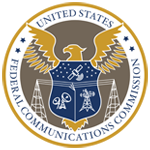
Federal Communications Commission (FCC)
The FCC regulates interstate and international communications by radio, television, wire, satellite, and cable across the country. The FCC is the federal agency responsible for implementing and enforcing America’s communications laws and regulations. Its broadband programs are primarily focused on funding infrastructure deployment and digital inclusion or adoption projects.
FCC reported on 19 broadband programs with $14.2 billion appropriated, $18.3 billion obligated, and $12.3 billion outlayed for broadband in FY 2022.
IMPACT ILLUSTRATION
COVID-19 TELEHEALTH PROGRAM
As a response to the COVID-19 pandemic and as directed by the Coronavirus Aid, Relief, and Economic Security (CARES) Act, FCC launched the COVID-19 Telehealth Program in 2020. Building on the success of the first round of COVID-19 Telehealth Program funding, Congress appropriated additional funding for the program in the 2021 Consolidated Appropriations Act, which the FCC used to establish Round 2 of the Program. The program provided funding to assist health care providers and administrators with purchasing the essential equipment and services needed to expand telehealth services and connected care programs in their communities. One of the prime benefits of this program was the program’s ability to accommodate locally designed telehealth initiatives.
The Second COVID-19 Report and Order required the FCC to distribute two funding awards to each state, territory, and the District of Columbia. Program participants received their Round 2 funding awards between August 26, 2021 and January 26, 2022. During this period, 446 health care providers located in all 50 states, the District of Columbia, and all U.S. territories received a collective $256.4 million in COVID-19 Telehealth Program funding.
Participants varied in their use of program funding to address their pandemic-related needs. Many purchased handheld devices like tablets, laptops, webcams, or remote patient monitoring devices, and networking gear like wireless access points, network switches, and teleworker VPN gateway-routers. Some awardees used the funding to buy video conferencing services, broadband service subscriptions, software licenses for telehealth platforms, and a variety of cloud-based services and data storage.
Both qualitative and quantitative evidence suggest that COVID-19 Telehealth Program funding effectively helped patients access health care during the COVID-19 pandemic. Most program participants recorded a significant increase in the number of patients using telehealth. A few notable impacts on telehealth services include the following:
- Continuity of Care: Many participants reported that the COVID-19 Telehealth Program allowed them to continue providing necessary care to patients during the pandemic while protecting patients and providers from the heightened health risks brought on by COVID-19.
- Patient Experience: Both health care providers and patients appreciated how access to telehealth services improved the patient experience.
- Remote Patient Monitoring: The availability of telehealth provided by the COVID-19 Telehealth Program enhanced some participants’ ability to monitor patients’ medical conditions from home. Expanded telehealth services allowed participants to reach older and underserved populations as well.
- Behavioral Health: The COVID-19 pandemic had a severe impact on the mental health and well-being of people around the world. To address these behavioral challenges, FCC’s COVID-19 Telehealth Program enabled participants to treat their patients for behavioral health issues remotely.
Additionally, post-program reports conclude that telehealth funding helped protect health professionals and vulnerable populations, conserved resources such as hospital rooms and personal protective equipment (PPE) and assisted in maintaining or increasing the volume of patient care services. Below is a list of six specific health care clinics and hospitals positively impacted by the FCC’s COVID-19 Telehealth Program funds.
Program Success Stories
- Barnes Jewish Hospital, St. Louis, Missouri: The hospital’s virtual visits increased from 4,000 in 2019 to more than 180,000 virtual visits in 2020. Barnes spent 90% of its funding on connected devices, including connected telehealth carts, tablet computers, remote patient monitoring devices and patient kits, and connected stethoscopes.
- Asian Pacific Health Care Venture, Inc., Los Angeles, California: In March 2020, 36% of all services at Asia Pacific Health Care Venture, Inc. were provided via telehealth appointments. After participating in the COVID-19 Telehealth Program, the percentage of remote telehealth visits increased to 86% of all patient visits. Asian Pacific Health Care Venture’s most useful purchases were network switches, video conferencing software, tablet computers, and laptops.
- Grady Health System, Atlanta, GA: The COVID-19 Telehealth Program provided Grady Health System with the tools needed to “maintain [its] clinic volumes throughout the height of COVID” and to receive 20,000 telehealth visits for patients with chronic conditions such as heart and vascular illnesses, cancer, and high blood pressure. Grady used program funds to purchase remote teleconferencing appliances, high-resolution monitors, telehealth carts and mobile devices, connected medical cameras, and software licenses.
- The University of Florida Department of Pediatrics, Gainesville, Florida: Using support from the FCC’s COVID-19 Program, the Department expanded its telemedicine offerings by more than 500% across most of its pediatric specialties. The COVID-19 Telehealth Program, coupled with innovative outreach programs through local schools and county extension offices, enabled UF to serve additional patients from outside of Florida. UF used program funds to purchase multi-function home medical exam tools, tablet computers, fingertip pulse oximeters, connected baby scales, connected stethoscopes, and related software, remote glucose monitors, speaker phones, web cameras, and smartphone-compatible scales.
- Saratoga Hospital Consortium in Saratoga Springs, New York: Prior to the COVID-19 pandemic, Saratoga Hospital Consortium in Saratoga Springs, New York offered no telehealth services. Following the COVID-19 Telehealth Program, the Consortium received 27,203 telehealth visits in 2020 and 14,149 telehealth visits in 2021. Using funding from the COVID-19 Telehealth Program, Saratoga navigated a dramatic increase in COVID cases by diverting patients from the emergency room to temporary facilities in a parking lot for triage with wireless access points and tablets. Saratoga reported that this change “would not have been possible without iPads, portable devices, and connectivity in the parking lot.”
- Harbor in Toledo, Ohio: Harbor used COVID-19 Telehealth Program funding to purchase HIPAA compliant telehealth software licenses for clinical staff, laptops with cameras and speakers for clinical staff, a patient wellness app, and tablets for patients with pre-installed telehealth software. As a result, Harbor scaled up its services to serve current clients and accepted referrals from health care providers in other parts of Ohio that could not adjust to the pandemic’s operating environment. The number of Harbor telehealth patients grew 264% during the pandemic.
IMPACT ILLUSTRATION
AFFORDABLE CONNECTIVITY PROGRAM
In FY 2022, the FCC continued to implement the Affordable Connectivity Program to bridge the digital divide for eligible households in every state, territory, and the District of Columbia. The Affordable Connectivity Program became the largest broadband affordability program in the country’s history, supporting over 21 million households by the end of FY 2022, and growing to over 23 million households in early 2024, at which point the FCC needed to wind-down the program due to lack of additional funding from Congress.
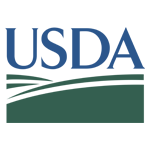
U.S. Department of Agriculture (USDA)
USDA provides leadership on food, agriculture, natural resources, rural development, nutrition, and related issues based on public policy, the best available science, and effective management. Within USDA, the ReConnect Loan and Grant program supplies loans and grants to provide funds for the costs of construction, improvement, or acquisition of facilities and equipment needed to provide broadband service in eligible rural areas.
USDA reported on five broadband programs with $1.9 billion appropriated, $1.8 billion obligated, and $317 million outlayed in FY 2022.
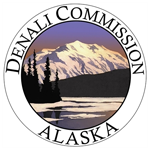
The Denali Commission (Denali)
The Denali Commission is an independent federal agency created to promote and provide sustainable infrastructure improvement, job training, and other economic development services that improve health, safety, and economic self-sufficiency within rural communities in Alaska and alleviate the long-term economic disparities suffered by Alaska Native communities. As part of its efforts, the Commission works to connect Alaskans to broadband Internet. The Alaska Broadband Program is a plan to meet that goal, focusing largely on improving “middle-mile” and “last-mile” broadband infrastructure throughout Alaska.
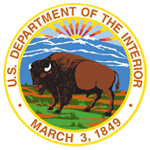
U.S. Department of the Interior (DOI)
The U.S. Department of the Interior (DOI) protects and manages the nation’s natural resources and cultural heritage; provides scientific and other information about those resources; and honors its responsibilities or special commitments to American Indians, Alaska Natives, and affiliated Island Communities. In pursuit of these goals, the department is working to help connect Tribal communities to the Internet through the National Tribal Broadband Grant (NTBG) program which provides $2.7 million in appropriated funds to federally recognized American Indian and Alaska Native Tribes, bands, villages, nations, or communities to deploy broadband.
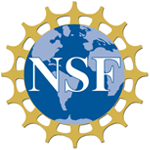
The U.S. National Science Foundation (NSF)
The U.S. National Science Foundation (NSF) is an independent federal agency that supports research to create knowledge, promote the progress of science, advance national health and prosperity, and secure national defense. Expanding broadband is essential to these goals, motivating NSF to create programs like the Campus Cyberinfrastructure (CC*) program.
IMPACT ILLUSTRATION
CAMPUS CYBERINFRASTRUCTURE
The U.S. National Science Foundation’s Campus Cyberinfrastructure (CC*) program invests in coordinated campus-level cyberinfrastructure improvements, innovation, integration, and engineering for science applications and distributed research projects. Learning and workforce development in cyberinfrastructure is explicitly addressed in the program. Projects help overcome disparities in cyber-connectivity associated with geographic location, advancing the geography of innovation, and enabling populations based in these locales to become more nationally competitive in science, technology, engineering, and mathematics (STEM) research and education.
In FY 2022, the program awarded grants to 24 states and jurisdictions, including Alabama, Delaware, Hawaii, Maine, Nebraska, Nevada, Oklahoma, South Dakota, Utah, and the Virgin Islands. One award to Georgia Tech aims to provide advanced networking services to researchers and educators from five historically Black colleges and universities (HBCUs), four of them from the Atlanta University Center Consortium (Clark Atlanta University, Morehouse College, Morehouse School of Medicine, and Spelman College), the AUC shared Woodruff Library, and Tuskegee University. Georgia Tech is working with these HBCUs to implement robust and secure 10 or 100 gigabit networks to enable and support computational research and education at these institutions.
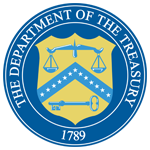
U.S. Department of the Treasury (Treasury)
Treasury’s mission is to maintain a strong economy and create economic and job opportunities by promoting the conditions that enable economic growth and stability at home and abroad, strengthen national security by combating threats and protecting the integrity of the financial system, and manage the U.S. Government’s finances and resources effectively. Treasury also administers the Capital Projects Fund which works to expand economic opportunity for underserved people and communities. In FY 2022, Treasury reported $9.9 billion of total obligated funding for the Capital Projects Fund.
![]()
U.S. Department of Commerce, Economic Development Administration (EDA)
The U.S. Economic Development Administration (EDA) designed its investment policy to establish a foundation for sustainable job growth and the building of durable regional economies throughout the United States. This foundation builds upon two key economic drivers–innovation and regional collaboration. Innovation is key to global competitiveness, new and better jobs, a resilient economy, and the attainment of national economic goals. Broadband is acknowledged to be a potential engine for economic opportunities and is frequently cited as a necessary condition for economic growth and prosperity in currently under/unserved areas.
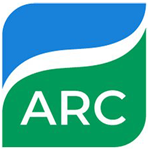
Appalachian Regional Commission (ARC)
The Appalachian Regional Commission (ARC) is an economic development partnership agency of the federal government and 13 state governments focusing on 423 counties across the Appalachian Region. ARC’s mission is to innovate, partner, and invest to build community capacity and strengthen economic growth in Appalachia to help the Region achieve socio-economic parity with the nation. ARC administers two programs that include broadband-related activities as eligible uses: the Area Development Program and the POWER Initiative.
IMPACT ILLUSTRATION
POWER INITIATIVE AND AREA DEVELOPMENT
Expanding broadband is essential to Appalachia, a region where many Americans lack access to reliable, affordable, high-speed Internet services. Due to the erosion of the coal industry, Americans in this region face high levels of poverty. The collective lack of access to high-speed Internet services creates a barrier to economic security, leaving Appalachians behind and unable to participate in the global economy.
ARC’s Partnerships for Opportunity and Workforce and Economic Revitalization (POWER) grants support entrepreneurship, workforce development, and infrastructure to strengthen re-employment opportunities, create jobs in existing or new industries, and attract new sources of investment for communities and regions that have been affected by job losses in the coal industry. ARC’s FY 2022 $1.9 million POWER grant to Caroll County, Ohio will go toward a broadband construction project which will deploy 86 miles of last mile fiber optic network to 384 households and 53 businesses. Deploying this broadband network will enhance the county’s economic competitiveness by enabling local businesses to attract new customers through digital marketing and to better engage in eCommerce.
In FY 2022, through an Area Development Grant, ARC provided Noble County, Ohio $750,000 to deploy 15 miles of fiber optic broadband network that will offer 100 Megabit per second Internet service to five businesses and 147 households when the project is complete. Additionally, ARC announced approval of a $500,000 grant to the Bledsoe Telecommunications Cooperative in Tennessee for a fiber broadband deployment project. ARC funds will be used to deploy 24.46 miles of fiber optic network to an otherwise unserved 296 households and 10 businesses.

Northern Border Regional Commission (NBRC)
Northern Border Regional Commission (NBRC) is a Federal-State partnership for economic and community development within the most distressed counties of Maine, New Hampshire, Vermont, and New York. America's northeast has a long history of entrepreneurship, forest projects manufacturing, and surviving off the natural resources of the region. In response to changing markets and global competition, Congress formed the NBRC in 2008 to help alleviate distress in the hard-hit northern counties of each state. These counties generally have higher levels of unemployment, population loss, and lower incomes. NBRC has one program where broadband is an eligible expense: the State Economic & Infrastructure Development Investment Program.
IMPACT ILLUSTRATION
NORTHERN BORDER REGIONAL COMMISSION
NBRC provides funding to critical economic and community development projects in Maine, Vermont, New Hampshire, and New York. In FY 2022, NBRC obligated $1 million and outlayed $704,000 for broadband infrastructure development in Augusta, Maine and surrounding areas. This investment in broadband will serve 18,895 residents and build broadband capacity in a geographically challenged area.
In partnership with EDA, NBRC also outlayed $455,000 to Bristol, Vermont in FY 2022 for broadband infrastructure purposes. This investment will provide broadband access for local businesses and low-income housing units.
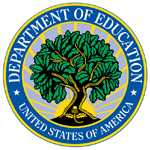
U.S. Department of Education (Education)
The U.S. Department of Education (Education) seeks to promote student achievement and preparation for global competitiveness by fostering educational excellence and ensuring equal access. In the digital age, a broadband connection is an essential tool for a robust education. Particularly in the era of remote learning, a broadband connection has become a prerequisite to engage with the education system. In FY 2022, the U.S. Department of Education reported that 19 programs included broadband as an eligible expense.
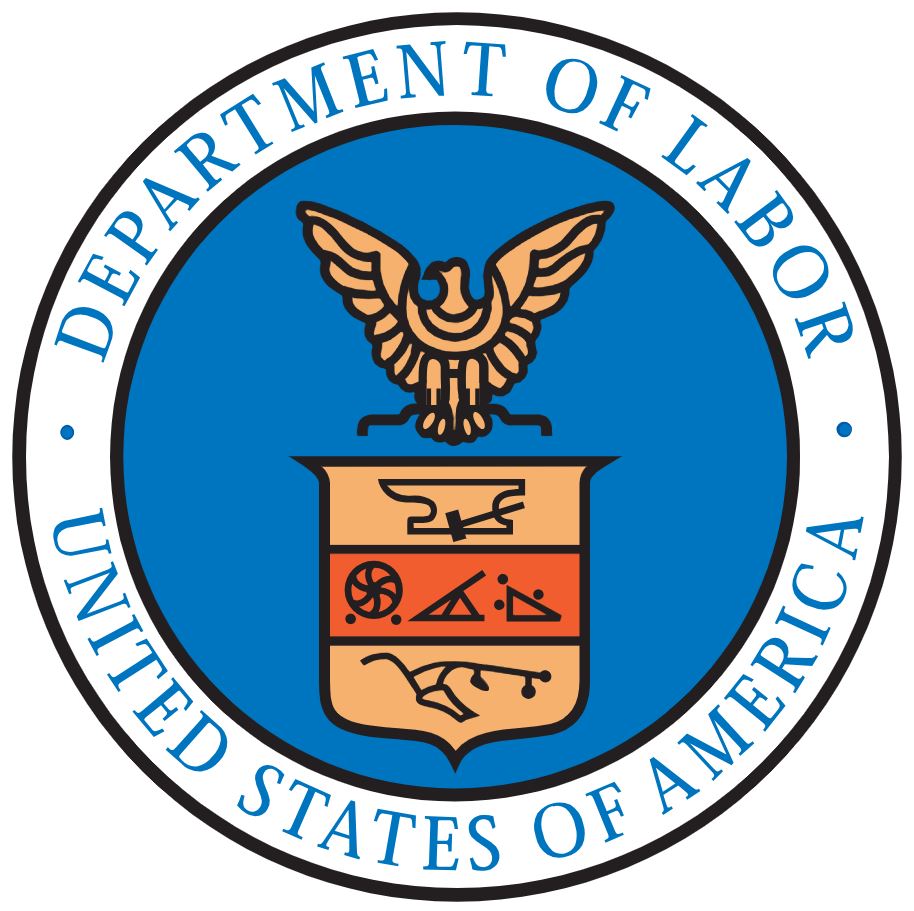
U.S. Department of Labor (Labor)
The mission of the U.S. Department of Labor (Labor) is to foster, promote, and develop the welfare of the wage earners, job seekers, and retirees of the United States; improve working conditions; advance opportunities for profitable employment; and assure work-related benefits and rights. The Department of Labor administers several workforce initiatives to scale America's ability to adopt broadband technology across the nation.
IMPACT ILLUSTRATION
EMPLOYMENT AND TRAINING ADMINISTRATION
The Department of Labor’s Employment and Training Administration (ETA) administers federal government job training and worker dislocation programs, federal grants to states for public employment service programs, and unemployment insurance benefits. These services are primarily provided through state and local workforce development systems.
| Telecommunications Industry Registered Apprenticeship Program (TIRAP) | Workforce Innovation and Opportunity Act (WIOA) | Strengthening Community Colleges Training Grants (SCC) | Telecommunications Workforce Interagency Group (TWIG) |
|---|---|---|---|
| Public-private joint venture that develops credentialed apprenticeship programs for the telecommunications workforce. | Funds approximately 2,300 American Job Centers (One-Stop Centers) that provide a full range of assistance to job seekers including “Digital Literacy.” | U.S. Department of Labor's grant program invests in the ability of community colleges to address the challenges of today's workforce. | Created by the Bipartisan Infrastructure Law to address the 5G workforce needs of the telecommunications industry, including workforce safety. |
In FY 2022, through a Request for Information (RFI) on Digital Literacy and Digital Resilience, ETA yielded key responses on successful approaches related to digital skills attainment and competency development in education and training efforts, the digital resilience strategies of education and workforce development systems, and the education and public workforce systems’ current challenges. ETA received over 80 unique responses from academia, non-profit/community-based organizations, library associations, employers, and other stakeholders that addressed these themes and findings.
Key areas of focus in the Digital Literacy and Digital Resilience RFI included:
- Current Trends in Digital Literacy
- Challenges and Barriers to Digital Literacy
- Digital Equity and Inclusion
- Strategic Partnerships and Collaboration
- Federal Investments in Digital Literacy
- Digital Literacy and K-12 Public Education System
Among responses indicating that many economic, logistical, and informational barriers to digital literacy still exist, responses to the RFI proposed that more funding is needed to support the American workforce’s digital resilience. Other key responses included a need for incorporating digital literacy as a requirement of K-12 curriculum, as well as a need to provide digital development and training to teachers and instructors.
Responses to the RFI also included examples of what is working in digital literacy, including providing free digital devices to incentivize participation in longer training programs, which are more effective than short-term programs, and offering flexible programs that include in-person, online, hybrid, and self-paced options for learning.
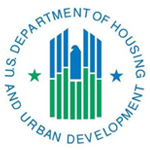
U.S. Department of Housing and Urban Development (HUD)
The U.S. Department of Housing and Urban Development (HUD) works to create strong, sustainable, inclusive communities and quality affordable homes for all; strengthen the housing market to bolster the economy and protect consumers; meet the need for quality affordable rental homes; use housing as a platform for improving quality of life; and build inclusive and sustainable communities free from discrimination. A broadband connection is increasingly considered an essential tool in any house or apartment. For several of its programs, HUD offers funding that can be used to provide broadband access in housing units and in some cases, the department requires that funding recipients make broadband accessible in their housing units. In addition, the Community Development Block Grant Program can fund broadband infrastructure for entire communities, if the beneficiaries are predominantly low-to moderate-income.
IMPACT ILLUSTRATION
CHOICE NEIGHBORHOODS PROGRAM
HUD invests in the economic revitalization and development of communities with Choice Neighborhoods Planning Grants. These grants support the development of comprehensive neighborhood revitalization plans which focus on directing resources to address three core goals: Housing, People and Neighborhoods.
In recent years, grantees have incorporated broadband expansion and digital inclusion as components of these neighborhood revitalization plans. To address gaps in broadband access and digital literacy, HUD published a Shrinking the Digital Divide: Increasing Internet Access and Skills Beyond COVID-19 toolkit using input from Choice Neighborhood grantees. HUD convened Choice Neighborhoods grantees—including staff from public housing agencies (PHAs), HUD-assisted housing providers, local governments, and supportive service providers and partners—for five peer exchanges to discuss the best methodologies of addressing challenges related to Internet, digital literacy, and access to computers, as well as the most helpful strategies for implementing programs designed to address these needs. This toolkit is a product of the peer exchange series. While these resources and tips were designed in response to COVID-19, the tips and resources are applicable well beyond the pandemic.
IMPACT ILLUSTRATION
CONNECTHOMEUSA (CHUSA)
HUD’s signature digital inclusion program is ConnectHomeUSA. It’s helped tens of thousands of HUD-assisted residents access affordable in-home internet service, devices, and the training to use them.12 The pilot program was initially launched in 2015 to address the “homework gap”13 for students in grades K-12 that were living in public and Indian housing. Since then, the program has expanded and has accepted 100 cities and communities nationwide into the program. ConnectHomeUSA communities have a goal to increase the number of connected residents by at least 15% each year. To date, more than 30,000 devices were deployed to families in need; over 72,000 in-home internet connections were made; and hundreds of digital literacy trainings were held. This program also creates a platform for community leaders, local governments, nonprofit organizations, and private industry stakeholders to join together to produce locally-tailored solutions for narrowing the digital divide in the growing CHUSA-designated communities across the country.

Institute of Museum and Library Services (IMLS)
The Institute of Museum and Library Services (IMLS) advances museum, library, and information services to meet the essential needs of the American public through grant-making, research, strategic engagement, and policy development. Libraries play a central role in providing digital access and inclusion. Over 99% of public libraries provide Internet access to their users through public access computers. In FY 2022, Tribal libraries employed the Native American Library Services: Basic Grant program to cover the cost of providing Internet access to the communities they serve. Many have traditionally done so by providing public internet access and public computers within the library. In addition, over the last several years, Wi-Fi hotspot lending has become a popular option for many libraries.
IMPACT ILLUSTRATION
NATIVE AMERICAN LIBRARY SERVICES: BASIC GRANTS AND NATIVE AMERICAN LIBRARY SERVICES: THE ENHANCEMENT GRANTS
The Native Village of Napaimute Library is located in the Middle Kuskokwim region of Alaska and serves this remote community by providing access to the Internet, computers, online services, and books. Due to its remote location, the library is not served by a utility company, but instead relies on a gas-powered generator to power the library. The Native American Library Services: Basic Grant program provides funding to Napaimute for its public Internet access service while also providing funds to purchase fuel to power the generator.
Libraries also serve as hubs for digital skill advancement for some Tribal communities.
One of the three Native American Library Services: the Enhancement Grants program (NAE) seeks to improve digital services to support needs for education, workforce development, economic and business development, health information, critical thinking skills, and digital literacy skills.
The Yavapai-Prescott Indian Tribe Library in Arizona received a NAE grant in FY 2022. The funds from this grant are being used to expand digital services for the Yavapai-Prescott community by expanding the reach of its access points and providing computer workstations and tablets to support needs for education, workforce development, economic development, and health information and digital literacy skills at the library.
Students in the community are already familiar with this technology and the access to wireless networking has become a necessity, especially with the new hybrid workforce and education experienced during the pandemic. The project will also help improve the educational programs related to STEM, coding, and 3-D printing/engineering to support the interests of the Tribal community.
10 The grant programs are the Broadband Equity, Access, and Deployment Program; the State Digital Equity Planning Grant Program; State Digital Equity Capacity Grant Program; Digital Equity Competitive Grant Program; the Enabling Middle Mile Broadband Infrastructure Program; the Broadband Infrastructure Program; the Connecting Minority Communities Pilot Program, and the Tribal Broadband Connectivity Program.
11 FirstNet Authority, Fiscal Year 2022 Report to Congress, (last accessed Nov. 3, 2023).
12 HUD, About ConnectHomeUSA (last accessed June 27, 2024).
13 Homework gap is a part of the digital divide that directly affects students. It refers to the situation where students are assigned homework requiring access to the internet, but they don’t have home access and thus cannot complete their assignments. As a result, students without internet access tend to lag behind in the education system and are less competitive in the workforce.
